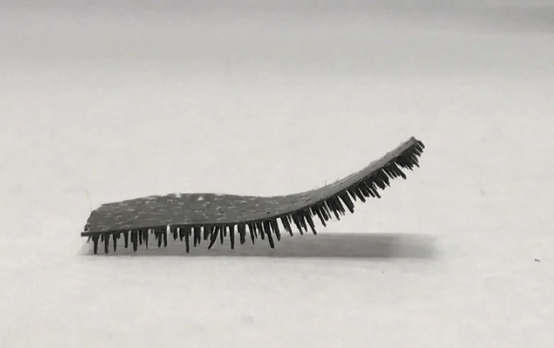Tiny robot caterpillar designed to walk through the body to deliver drugs
The Research team at the City University of Hong Kong has developed a tiny robot with ‘caterpillar legs’ that could also be used to deliver drugs inside the human body. They say it can move efficiently inside surfaces within the body lined with, or entirely immersed in, body fluids such as blood or mucus. Researchers say that the robot is capable of carrying relatively heavy loads and adapting to adverse environments and could pave the way for medical technology advances. But what makes the ‘milli-robot’ stand out is its hundreds of less than one millimeter long pointed legs that look like tiny hair. The research was published in Nature Communications. The robot’s body thickness measures around 0.15 mm, with each conical leg measuring 0.65 mm long and the gap between the legs measuring about 0.6 mm, making the leg-length-to-gap ratio around 1:1. The pointed legs have greatly reduced the contact area thus reducing friction. Laboratory tests showed that the multi-legged robot has 40 times less friction than a limbless robot in both wet and dry environment. The robot is fabricated with a silicon material called polydimethylsiloxane (PDMS) embedded with magnetic particles which enables it to be remotely controlled by applying electromagnetic force. Both the materials and the multi-leg design greatly improve the robot’s hydrophobic property. The robot is controlled by a magnetic manipulator that can move it in both a flap propulsion pattern and an inverted pendulum pattern meaning that it can use its front feet to flap forward as well as swinging the body by standing on the left and right feet alternately to advance respectively. The researchers said ‘the rugged surface and changing the texture of different tissues inside the human body makes transportation challenging. Our multi-legged robot shows an impressive performance in various terrains and hence open wide applications for drug delivery inside the body.’ The research team further proved that when facing an obstacle ten times higher than its leg length, the robot, with its deformable soft legs, is able to lift up one end of its body to form an angle of up to 90 degrees and cross the obstacle easily and can also increase its speed by increasing the electromagnetic frequency applied. The robot also shows a remarkable loading ability. Lab tests showed that it was capable of carrying a load 100 times heavier than itself, a strength comparable to an ant, one of the strongest creatures in nature or to a human being able to easily lift a 26-seated mini-bus. Before conducting further tests on animals and eventually on humans, the research teams are further developing and refining their research in three aspects, namely finding a biodegradable material, studying new shapes and adding extra features. The team hopes to create a biodegradable robot in the next two to three years, so it will decompose naturally after its meds delivery mission.

